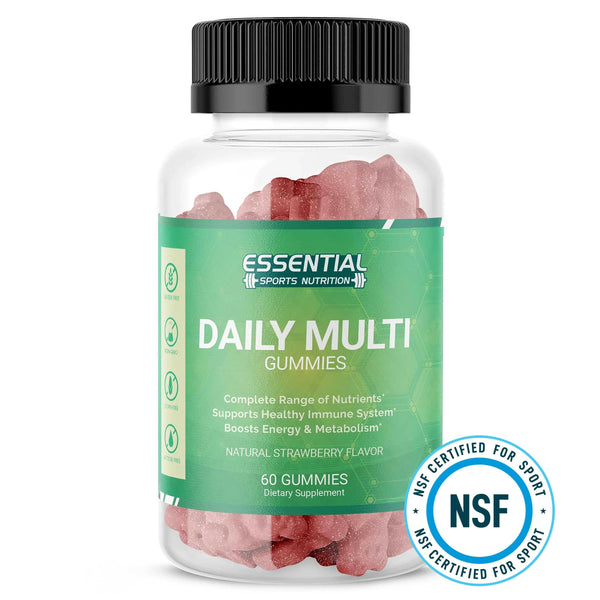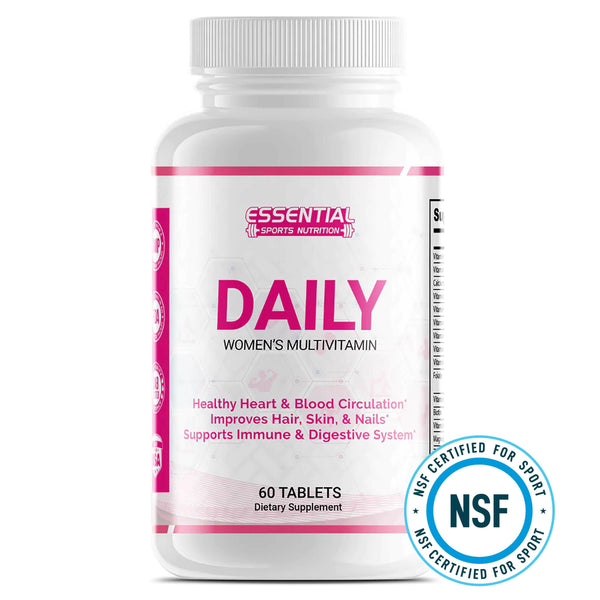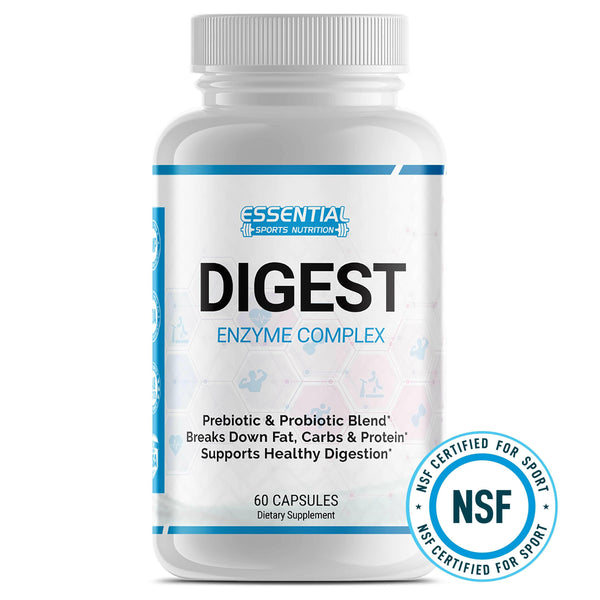Navigating a Gluten-Free Diet for Celiac Disease
If you're managing celiac disease, avoiding gluten is essential to protect your small intestine and guarantee nutrient absorption. Gluten, found in wheat, barley, and rye, triggers harmful immune responses in your body. Stick to naturally gluten-free foods like meats, vegetables, and certain grains like rice and certified gluten-free oats. Beware of hidden gluten in processed foods, and always check labels for potential cross-contamination. Maneuvering a gluten-free diet can be challenging, from dining out to avoiding cross-contact in your kitchen. Care and attention in meal planning can maintain your health and prevent damage. Discovering more can equip you with the tools for a safer, healthier diet.

Key Takeaways
-
Identify and eliminate all sources of gluten, including wheat, barley, rye, and triticale from the diet.
-
Incorporate essential gluten-free foods like meats, fish, fruits, vegetables, rice, and potatoes.
-
Read food labels carefully to avoid hidden gluten in processed foods, additives, and condiments.
-
Prevent cross-contamination by using separate cooking utensils and storage areas for gluten-free products.
-
Consult healthcare professionals to tailor a balanced gluten-free diet and manage celiac disease effectively.
Understanding Celiac Disease
Celiac disease, an autoimmune disorder triggered by consuming gluten, affects about 1% of the global population, leading to significant damage in the small intestine when gluten is ingested. This condition doesn't just happen by chance; a genetic predisposition plays an important role in whether you'll battle with it. If you've been feeling off lately, experiencing symptoms that range from digestive issues to fatigue and even skin problems, it may not just be stress or the usual suspects. It's important to think that these could be signs of celiac disease, especially if they persist or worsen after eating foods containing gluten.
Understanding the relationship between gluten and celiac disease is crucial. Gluten, a protein found in wheat, barley, and rye, acts as a trigger for those with celiac. When you consume gluten, your body's immune response attacks the small intestine, leading to damage that hampers nutrient absorption. This isn't just about temporary discomfort; it's a serious autoimmune disorder that requires attention and care. Recognizing the symptoms and understanding the genetic predisposition can be the first steps toward managing this condition and improving your quality of life.
The Basics of a Gluten-Free Diet

Mastering a gluten-free diet begins with knowing which foods to avoid and which to embrace. You'll discover that avoiding gluten involves more than just eliminating wheat, barley, rye, and similar grains; it's also about recognizing the dangers of cross-contamination and finding nutritious, gluten-free alternatives. Concentrating on naturally gluten-free foods and diligently reading labels can uphold a balanced diet that promotes your health and well-being.
Understanding Gluten Sources
Identifying gluten sources is essential for people with celiac disease. Gluten, a protein found in wheat, barley, rye, and triticale, must be strictly avoided as it can trigger harmful reactions. Beyond these gluten-containing grains, gluten sneaks into many everyday products, including baked goods, breads, pastas, cereals, beer, and malt beverages. It's also hidden in processed foods like candies, condiments, hot dogs, ice cream, and soups. Even some additives—colorings, flavorings, starches, and thickeners—may harbor gluten. That's why it's important to read food labels meticulously. With this knowledge, you're better positioned to navigate your gluten-free diet, ensuring your food choices support your health without compromising safety or nutritional needs.
Essential Gluten-Free Foods
To enhance your health while managing celiac disease, it's important to incorporate essential gluten-free foods such as meats, fish, fruits, vegetables, rice, and potatoes into your diet. These foods form the foundation of a gluten-free diet, steering clear of gluten-containing food and hidden gluten. Packaged gluten-free options are now more accessible, making adherence easier. Remember, oats can be part of your diet if labeled gluten-free.
| Food Group | Gluten-Free Foods | Notes |
|---|---|---|
| Grains | Rice, gluten-free oats | Make sure oats are labeled gluten-free |
| Protein | Meat, fish | Prefer unprocessed options |
| Fruits & Vegetables | All types | Natural and healthy choices |
| Packaged Options | Certified gluten-free products | Watch for hidden gluten |
Consulting healthcare professionals can help tailor a gluten-free diet to your needs, ensuring nutritional balance.
Avoiding Cross-Contamination Risks
After exploring the foundational gluten-free foods, it's equally important to understand how to keep them safe from cross-contamination. Cross-contamination risks can turn otherwise safe gluten-free foods into hazards for those with celiac disease. To safeguard your health and maintain a strict gluten-free diet, being aware of and taking precautions against cross-contact with gluten is critical. This includes separate storage and preparation areas in your kitchen to prevent gluten from transferring to your gluten-free items. Understanding where hidden gluten might lurk is also key, as it can lead to unintentional cross-contact. Remember, it's not just about choosing gluten-free foods; it's about ensuring they stay gluten-free from the store to your plate.
Identifying Foods Containing Gluten

Exploring a gluten-free diet means becoming a detective of sorts, as gluten lurks in many common foods beyond the obvious wheat, barley, and rye. You'll need to scrutinize food labels for hidden sources like malt or certain starches, which can be challenging initially. Understanding where gluten hides, especially in additives or due to cross-contact, is essential for maintaining your health and well-being on this journey.
Common Sources of Gluten
Identifying gluten in foods is essential for those with celiac disease, as it's hidden in many common items ranging from baked goods to certain condiments. Gluten, a protein found in grains such as wheat, barley, rye, and triticale, is a primary concern. Common sources include breads, cereals, pastas, beer, and malt beverages. However, it doesn't stop there; many processed foods sneak in gluten through additives like colorings, flavorings, starches, and thickeners. Unexpected products such as candies, condiments, hot dogs, ice cream, and soups can also contain gluten. While exploring the gluten-free landscape, it's important to be vigilant about gluten-free products and understand that gluten often hides in plain sight within processed foods.
Reading Food Labels Carefully
To safeguard your health and adhere to a gluten-free diet, you must meticulously read food labels, as gluten often lurks in unexpected ingredients. Ingredients like malt, modified food starch, and hydrolyzed vegetable protein are hidden sources where gluten can hide. It's essential to look for 'gluten-free' labels on products, ensuring they meet the FDA standard of less than 20 parts per million of gluten. Wheat, barley, rye, and oats are common ingredients that can contain gluten, so identifying them on labels is important. Additionally, products like soy sauce, salad dressings, and seasonings may contain wheat-based ingredients. Understanding terms such as 'natural flavors' and 'spices' on food labels can also help you identify potential hidden sources of gluten in food products.
Hidden Gluten Traps
After understanding the importance of reading food labels carefully, it's equally important to recognize that gluten can also be hidden in foods you wouldn't expect, such as soups, sauces, and processed items. Often used as a thickener, wheat can introduce gluten into these products. Similarly, malt flavoring and certain additives found in candies and condiments are potential hidden sources. Additionally, cross-contact risk means that even cereals, granolas, and granola bars might be contaminated. Processed fruits, veggies, and frozen potatoes can also harbor gluten, making vigilant label reading indispensable. For anyone with celiac disease, identifying these hidden traps is essential to avoid gluten and prevent reactions. Always double-check ingredients and be aware of cross-contact risks to safeguard your health.
Safe Grains and Substitutes

Naturally gluten-free grains, such as quinoa, rice, and buckwheat, offer important and necessary alternatives to traditional wheat products for those with celiac disease. These grains fit seamlessly into a gluten-free diet, providing essential nutrients without the risk of gluten exposure. Awareness of cross-contact risks is vital, especially with bulk-bin grains. To minimize these risks, opt for grains that have been tested and contain less than 20 parts per million (ppm) of gluten.
Specialty stores often carry a variety of safe grains and substitutes that can enrich your diet, including:
-
Amaranth
-
Teff
-
Almond flour
-
Coconut flour
-
Tapioca flour
These substitutes allow for dietary variety and offer unique nutritional benefits. When incorporating these grains and flours into your gluten-free diet, it's crucial to read labels carefully. Not all products labeled as wheat-free are gluten-free. You can confidently maintain a balanced, gluten-free diet by choosing tested grains and being mindful of cross-contact risks. Specialty stores are invaluable resources for finding these safe and nutritious substitutes, ensuring your dietary needs are met without compromising taste or quality.
Managing Cross-Contamination

Having explored safe grains and substitutes, it's equally important to focus on preventing cross-contamination to protect your health while following a gluten-free diet. Cross-contamination, even in tiny amounts, can trigger symptoms and intestinal damage for those with celiac disease. This makes it critical to understand and mitigate sources of cross-contact, mainly through separating kitchen tools and strict handling protocols.
Awareness and implementation of strict protocols to prevent cross-contact are essential. Here's a quick guide to help you manage cross-contamination risk:
| Strategy | Implementation | Benefit |
|---|---|---|
| Separate Cooking Utensils | Use different cutting boards, toasters, and utensils for gluten-free foods. | Reduces risk of gluten transfer. |
| Dedicated Storage | Keep gluten-free foods in separate containers. | It prevents gluten particles from settling on gluten-free items. |
| Awareness of Cross-Contact | Educate family or co-workers about not using gluten-free designated items. | Minimizes unintentional gluten exposure. |
| Strict Food Handling | Wash hands and surfaces thoroughly before preparing gluten-free meals. | Ensures a safe preparation environment. |
Navigating Gluten-Free Labels

When scanning the grocery aisles, it's vital to understand that the FDA regulates gluten-free labels to ensure they meet specific standards, keeping your diet safe and compliant. This regulation guides those with celiac disease, directing you towards selections that won't compromise your health. But deciphering these labels requires more than a quick glance; it requires a vigilant eye and a bit of know-how.
-
Look for certified gluten-free logos: These symbols are your best assurance that a product meets stringent gluten-free standards.
-
Ingredient scrutiny is key: Even with a gluten-free label, it's important to review the ingredients list for hidden sources of gluten.
-
Not all gluten-free products are labeled: Some items, especially those that are naturally gluten-free, might not carry the label, making it important to know your gluten-free ingredients.
-
Develop a gluten-free menu plan: This can help you focus your shopping on products you know are safe and reduce time spent reading labels in-store.
-
Understanding FDA standards: Familiarize yourself with what these entail, enhancing your confidence in selecting truly gluten-free options.
Deciphering gluten-free labels isn't just about finding safe food; it's about reclaiming your health and enjoying a varied, delicious gluten-free menu.
Naturally Gluten-Free Foods

A celiac diet foundation relies on naturally gluten-free foods such as meats, fruits, vegetables, rice, and potatoes, which are essential for maintaining health without compromising taste. These foods form the backbone of a safe and enjoyable eating plan for anyone with celiac disease. By focusing on these natural options, you avoid the complications that come with foods that contain gluten, guaranteeing your diet is not only vital but also rich in nutrients.
Packaged gluten-free products have become increasingly available, offering convenience but also requiring vigilance. It's important to remember that just because a product is labeled gluten-free, it doesn't automatically mean it's healthy. You should always read labels carefully and opt for whole foods whenever possible to ensure a balanced diet.
Oats, often a point of confusion, can be included in your gluten-free diet if they're certified gluten-free. This certification ensures they haven't been contaminated with gluten, making them a safe and nutritious option. However, moderation is key, as with all foods.
Consulting with healthcare professionals can help tailor a gluten-free diet plan that meets your nutritional needs, ensuring you maintain peak health while adhering to a strict gluten-free diet. This personalized approach is critical in managing celiac disease effectively.
Dining Out With Celiac Disease

Traversing the dining scene with celiac disease requires clear communication with restaurant staff to ensure your meals are safely prepared without gluten contamination. It's important to convey your dietary needs explicitly to guarantee your safety. When choosing where to eat, consider these essential steps:
-
Communicate your dietary needs clearly with restaurant staff to minimize cross-contact risk.
-
Seek restaurants offering gluten-free options or dedicated gluten-free menus to safeguard your health.
-
Be vigilant about hidden sources of gluten in sauces, dressings, and marinades, asking specific questions to avoid them.
-
Research ahead by checking online reviews or calling restaurants to understand their gluten-free protocols and how they handle cross-contact.
-
Opt for certified gluten-free restaurants or those with trained staff, enhancing your dining experience's safety.
Conclusion

Exploring a gluten-free diet for celiac disease is like carefully plotting a course through a maze; it requires vigilance, knowledge, and a bit of creativity. By understanding which grains are safe, learning to identify hidden gluten, and managing cross-contamination, you're not just avoiding harm—you're fueling your body with the nourishment it needs to thrive. Remember, dining out and enjoying diverse foods is still on your map, ensuring your healthful and flavorful journey. Embrace it, and your health will thank you.
Following a Gluten-Free Diet for Celiac Disease FAQs
Q: What is a gluten-free diet, and why is it important for individuals with celiac disease?
A: A gluten-free diet is necessary for individuals with celiac disease as gluten triggers an immune response in their bodies, causing damage to the lining of the small intestine.
Q: How can one follow a gluten-free diet effectively?
A: To effectively follow a gluten-free diet, one must avoid foods that contain gluten, such as wheat, barley, and rye, and opt for naturally gluten-free alternatives like fruits, vegetables, meats, and dairy products.
Q: What are some examples of gluten-free alternatives for traditional gluten-containing foods?
A: Gluten-free alternatives for traditional gluten-containing foods include gluten-free bread, pasta made from corn or rice, quinoa, and gluten-free oats.
Q: Can individuals with celiac disease have non-celiac gluten sensitivity as well?
A: Yes, individuals with celiac disease can also have non-celiac gluten sensitivity, which may require them to follow a gluten-free diet even if they do not have celiac disease.
Q: How does eating gluten affect individuals diagnosed with celiac disease?
A: Eating gluten can trigger symptoms such as abdominal pain, bloating, diarrhea, and fatigue in individuals diagnosed with celiac disease, as their immune system reacts negatively to gluten.
Q: Is it important for children with celiac disease to adhere to a gluten-free diet?
A: Yes, children with celiac disease must adhere to a gluten-free diet to prevent complications and ensure proper growth and development.
Q: How can one maintain a balanced diet while following a gluten-free lifestyle?
A: To maintain a balanced diet while following a gluten-free lifestyle, it is essential to include a variety of gluten-free grains, fruits, vegetables, proteins, and dairy products in your meals.
Q: Can adults with celiac disease develop liver disease if they do not follow a gluten-free diet?
A: Yes, adults with celiac disease who do not follow a gluten-free diet may be at risk of developing liver disease due to the ongoing inflammation and damage caused by gluten consumption.
Q: What Foods Are Gluten-Free for Celiac Disease?
A: You're looking for gluten-free foods, right? Stick to fresh fruits, veggies, meats, fish, rice, and potatoes. Quinoa, rice, corn, and millet are great too. Don't forget certified gluten-free oats, seeds, nuts, and legumes.
Q: What Foods Should Be Avoided With Celiac Disease?
A: You should avoid foods containing gluten, such as wheat, barley, rye, and triticale. Also, avoid processed foods, baked goods, pastas, and certain additives. Always check labels for hidden gluten in condiments, candies, and beverages.
Q: What Triggers Celiac Disease Later in Life?
A: You might wonder what kicks off celiac disease as you age. It's often down to stress, infections, hormonal changes, or shifts in your gut bacteria. Even if you're genetically predisposed, these factors can activate it.




























